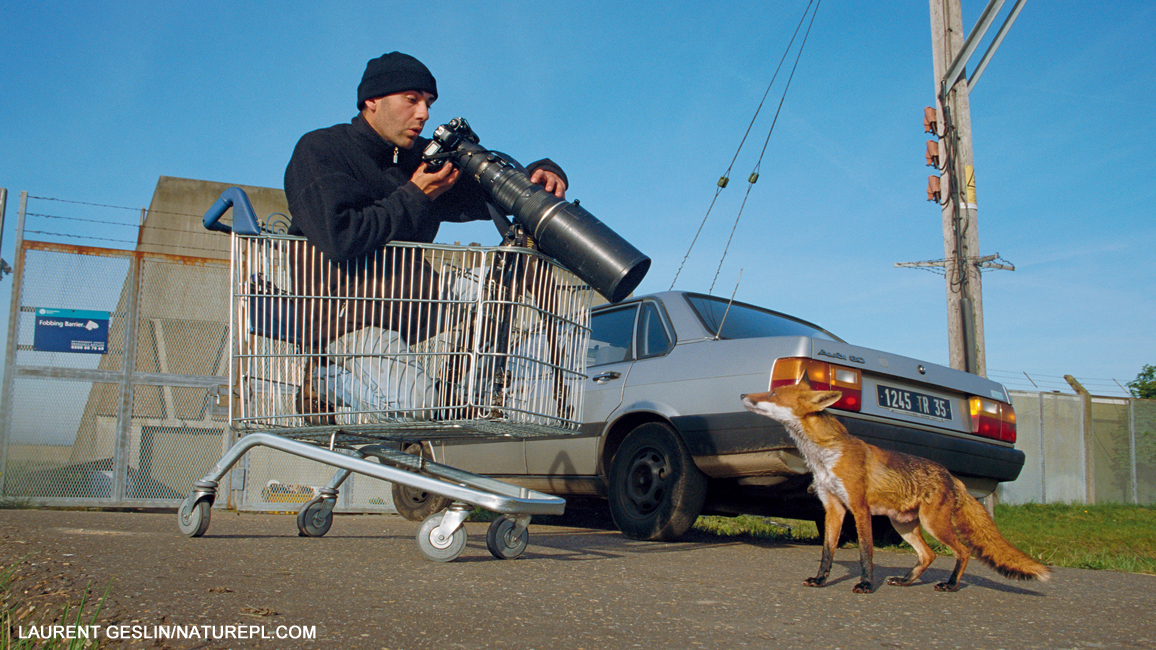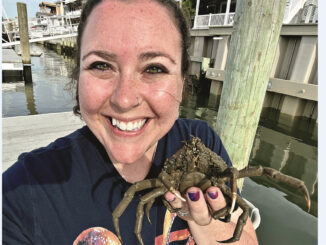
Click!
By Katie StaceyBehind every great wildlife photo is a great story.
Wildlife photography can be a tough job. How do I know? I’ve spent a lot of time helping my partner, wildlife photographer Luke Massey. I once had to hold his ankles as he dangled out a 28th-floor window to photograph peregrine falcons!
Wildlife photographers around the world have exciting—and sometimes scary!—experiences with the animals they photograph. Here are a few of their stories.

This nibble on the head is just a Steller sea lion’s way of checking out a strange visitor. Photographer Celia Kujala stayed calm and still, so the sea lion quickly realized she wasn’t a threat. And fellow photographer Phillip Colla was able to get this fun shot!
To look for prey, a hungry cheetah may normally climb up on a termite mound. But in the Masai Mara National Reserve in Kenya, cheetahs have learned to check out the view from the tops of safari vehicles! This may seem funny, but it can actually be dangerous for the cats and for tourists. Luckily, this cheetah soon climbed down—leaving filmmaker Owen Newman inside free to continue shooting the wild cat in its natural environment.
A giant panda may look like an adorable stuffed animal. But it’s neither a toy nor a pet. “Pandas are bears and can become more dangerous as they get bigger and older,” says photographer Gerry Ellis. To get this close to a baby panda, Gerry had to get permission from the people who run China’s Wolong Nature Reserve. Workers at the reserve kept a close eye on him while he photographed the endangered bears.

“I was floating near a group of sperm whales to photograph them when this one suddenly came by me very close,” says Flip Nicklen, who was in Ecuador’s Galápagos Islands at the time. “I was surprised and probably a little scared!” The sperm whale is the biggest animal with teeth on Earth, so no wonder Flip had a bit of a fright!
These South American caimans (KAY-munz) are smaller than their crocodile cousins—and less likely to attack people. But photographer Art Wolfe doesn’t recommend that just anyone go nose-to-snout with the toothy creatures! This group of caimans is used to people, so they came up to the water’s edge to greet Art and his team. Art has been photographing wild animals for 40 years, so he knew what to do to stay safe AND to get a great closeup.
Don’t look down! After years of searching, Christophe Sidamon-Pesson found a nesting pair of wallcreepers high up on some cliffs in the French Alps. (Those are Christophe’s dangling feet below!) To photograph this hard-to-spot bird and its mate, Christophe needed a head for heights—and lots of rock-climbing practice and equipment.
This sandy spot is in the Cayman Islands, in the Caribbean Sea. And, for a very good reason, it’s known as Stingray City. Local fishermen clean their catches nearby, and stingrays gather to eat the tossed-out fish parts. Photographer Marty Snyderman took this photo of a friend who was getting up close and personal with a ray. “As long as you don’t step on a ray or block its movement, it’s fine to be around it,” says Marty.

Laurent Geslin was living in London, working on a photo book about city animals. He decided to climb into a shopping cart and pretend it was a safari bus. Surprise—it worked! “It started as a joke, but then this female red fox came really close!” says Laurent. It might look silly, but it was a great way to attract a curious and playful fox.
Humboldt squid are attracted to lights in their deep, dark ocean home. So when Bob Cranston and Mark Conlin wanted to film the big-eyed squid for a TV show, they hung bright lights over the deep water. The squid saw the lights and came swimming up from the deep—close enough to be photographed. But while the light shone a long way down, it didn’t spread outward very far. “It was a little scary not knowing what could be behind you in the dark!” says Mark, who took this photo of Bob and the squid.
If you catch a male capercaillie (kap-ur-KYE-lee) in a bad mood, the turkey-like bird will let you know about it! Photographer Frédéric Desmette came to this spot in Scotland with a friend because they’d heard capercaillies were nearby. (The birds are protected in Scotland. There aren’t many of them left.) “Suddenly the capercaillie came out of the woods and started to charge my friend!” says Frédéric. Don’t worry: No birds OR people were harmed in the making of this photo!
Sometimes wild animals just refuse to cooperate! Suzi Eszterhas was squatting on the ground to photograph a family of meerkats when the group scampered behind her to use her body as a wind block. “This was adorable, but not the best situation for me to take photos!” says Suzi. Fellow photographer Jak Wonderly captured this fun shot of Suzi, which is now the cover of her latest book!
If you want to head outside and try your hand at wildlife photography, remember these two rules: Stay safe and always respect the animals. After all, you’re taking photos in their home!
















